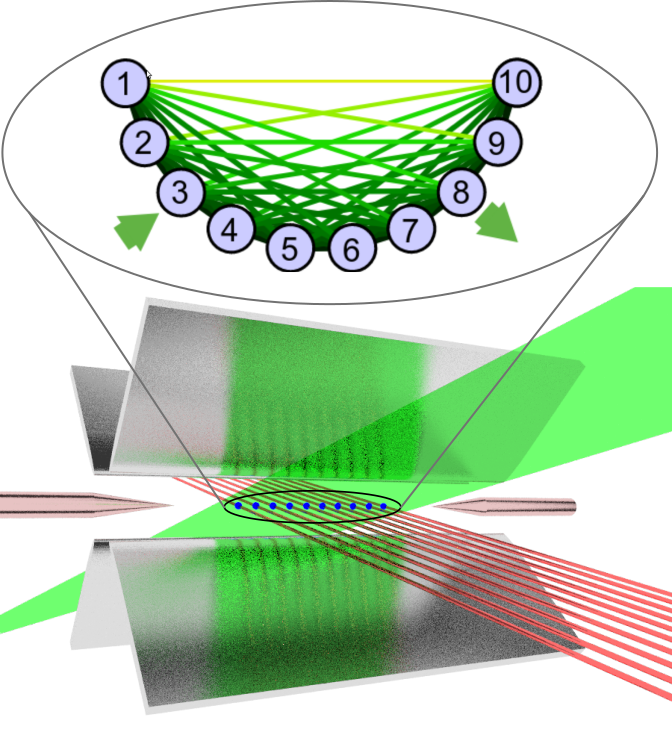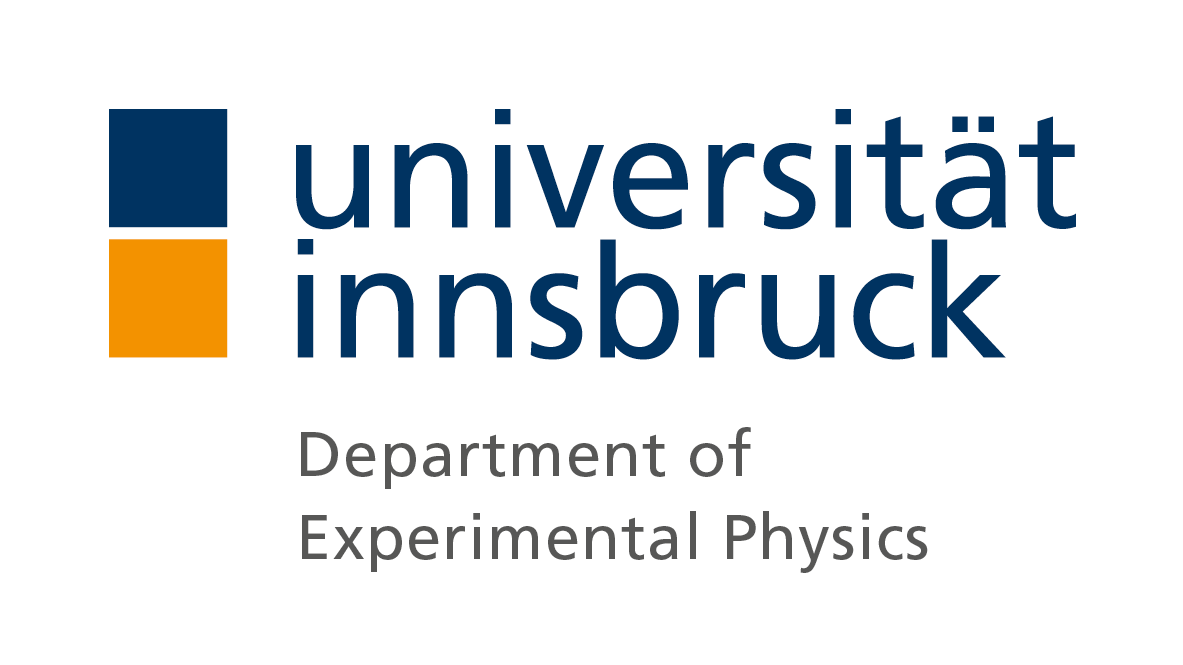Noise improves energy flow
Researchers in our group, the IQOQI Innsbruck and the University of Heidelberg, have demonstrated a quantum effect in which noise helps electronic excitation to propagate through a network of ten qubits. The work has now been published in Physical Review Letters and constitutes controlled study of quantum transport, with importance to fields ranging from condensed-matter physics and material science to quantum chemistry and quantum biology.
The way in which energy is transported through a network governs fundamental properties in nature, such as thermal and electric conductivity or phase changes. In recent years, investigations into quantum transport have drawn great inspiration from quantum biology, especially from light-harvesting complexes that are central elements of photosynthesis. The transport through these complexes is governed by a highly non-trivial interplay between coherent quantum dynamics, disorder and dissipative environment-induced noise: Disorder can cause destructive interference, which suppresses coherent transport of excitation through Anderson localization. The coupling of a system to environments, however, induces dynamical noise that can lift Anderson localization, an effect known as environment-assisted quantum transport (ENAQT). At large noise levels, the transport efficiency is expected to decrease again due to the quantum Zeno effect.
 In our work, we present an experimental in-depth study of these transport phenomena on a 10 site network. Experimentally, the network is realized by a string of calcium ions in a linear Paul trap, with individual ion control and read out. We have excellent control over the network connectivity and coupling strengths between sites. Disorder and noise are realized by shifting individual ions out of resonance with respect to the laser that induces the network coupling. This permits us to microscopically study quantum transport in a highly tuneable, scalable system where we can engineer practically any desired disorder and spectral noise properties. When applying white dephasing noise of increasing strength to a disordered network, we observe the above-mentioned crossover from coherent dynamics and Anderson localization to ENAQT, and finally a suppression of transport due to the quantum Zeno effect. In the regime where ENAQT is most effective, we find that the transport reveals coherences only at very short times, and that the spread of the excitation is mostly diffusive. Finally, we show that non-Markovian dephasing can maintain coherences longer than white noise, while the structure of the noise spectrum has a strong influence on the transport efficiency.
In our work, we present an experimental in-depth study of these transport phenomena on a 10 site network. Experimentally, the network is realized by a string of calcium ions in a linear Paul trap, with individual ion control and read out. We have excellent control over the network connectivity and coupling strengths between sites. Disorder and noise are realized by shifting individual ions out of resonance with respect to the laser that induces the network coupling. This permits us to microscopically study quantum transport in a highly tuneable, scalable system where we can engineer practically any desired disorder and spectral noise properties. When applying white dephasing noise of increasing strength to a disordered network, we observe the above-mentioned crossover from coherent dynamics and Anderson localization to ENAQT, and finally a suppression of transport due to the quantum Zeno effect. In the regime where ENAQT is most effective, we find that the transport reveals coherences only at very short times, and that the spread of the excitation is mostly diffusive. Finally, we show that non-Markovian dephasing can maintain coherences longer than white noise, while the structure of the noise spectrum has a strong influence on the transport efficiency.
Read the full article: Christine Maier, Tiff Brydges, Petar Jurcevic, Nils Trautmann, Cornelius Hempel, Ben P. Lanyon, Philipp Hauke, Rainer Blatt, and Christian F. Roos, Phys. Rev. Lett. 122, 050501 (2019)

